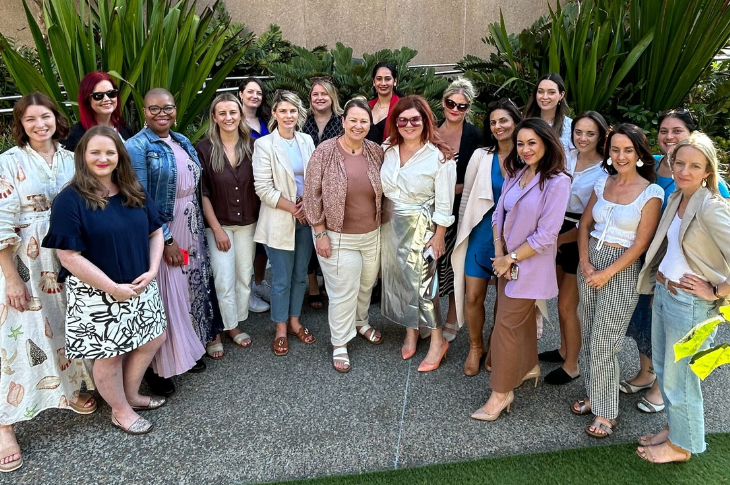How to write a freelancer resume in 8 key steps
With Jennifer Sanderson, FG Recruiter

In my 12 years of working in recruitment, the request candidates dread most is when I ask them to write or update their resume or profile, or write a paragraph about why they think they are great for a particular role or client and what their career highlights are. It’s no easy task writing any of these. You want to sell yourself well but you don’t want to come across as arrogant and writing these pieces can trigger the ‘cringe’ factor when you have to ‘blow your own trumpet’. As a freelancer,
In fact, as a quick trick, what I suggest to several of my freelancers and candidates who struggle with this, is I ask them to get their partner, friend or past colleague to write a blurb about why they think they are a great professional. You can then put this into your own words, and most of the time descriptive words or qualities are mentioned that others see that you may not have considered. Win-win right!?
When writing your freelancer resume or talent profile, think of it as more than just a document that lists your work history. This document should share your personal flair, your style, what you are proud of and most importantly, what you can offer to your next client or employer.
So how do you write a strong freelancer resume or talent profile?
Here are eight key steps on how to write a freelancer resume or talent profile that ensures you’re at the top of any client or employers list.
- Keep it clean & crisp – Layout is important. This profile/document is a reflection of you. If you regard yourself as organised and well presented, your resume and profile should be also. Find a template that speaks to you. Check out Canva or a google search to find loads of free templates. And if you’re a creative, steer clear of the templates and use this opportunity to showcase your skills.
- Don’t succumb to the one or two-page rule – It’s a controversial opinion amongst recruiters, however, I find the ‘keep your details to a page or two max’’ is out of date. Yes, we want the profile or resume to be as condensed as possible but I have come across so many resumes where I just don’t get enough detail because someone has tried to cram their experience down too much. I wouldn’t suggest going over four pages but get your experience in there! The extra details can make all the difference in the selection process, offering your employer or new clients a deeper understanding of who you are.
- Write a summary and note your key skills and qualities – Your summary shouldn’t be a two-paragraph, buzzword description of yourself. E.g. ‘a team player who is committed to their role’. That’s not really giving the reader useful information. Use the summary to explain how you would describe your position or services professionally and what you are looking for going forward, ‘a marketing professional specialising in digital campaigns looking for part-time opportunities.’ It’s feeding the reader what they actually need to know.
- Get to the point – Don’t ramble in your CV or profile. Make it clear and concise. List your key responsibilities for each role or project in a list format and steer away from company jargon or providing details that are not relevant to the reader. I would suggest listing at least two major achievements or highlights for each significant role (or roles applicable to the job or project you are applying for). When explaining these highlights, again, keep it condensed and outline the problem, the solution and how you measured the success. As an example, ‘When the global pandemic resulted in customers being unable to physically attend stores, I presented leadership with an online, digital solution that resulted in an increase of sales by 10% MoM in 2020 and an increase in our customer subscriptions by 23%.’
- Numbers, numbers, numbers – Emphasis Training Ltd (a business designed to assist with writing impactful content, blogs etc) talk about the power of stats and numbers. When you have a lot of text on your page the eyes are drawn to a numerical figure to break up the words, and even more so if it’s an interesting statistic. The figure or statistic can also create impact and make the description tangible for the reader. For example, which one do you find more engaging? ‘We doubled sales in just over a year’ versus, ‘we took the business from a revenue of $5M in 2020, to in excess of $10M in 2021.’
- The good ol’ photo debate – Some employers and recruiters encourage a photo, and for others, it’s a big no-no. I personally believe a photo is great…if the photo is appropriate. A professional photo that gives a sense of you can add to your resume. However, I’d strongly advise against photos (and yes I’ve seen all of these examples) of you with a cocktail in hand, an unflattering selfie or you in shades on the beach. A professional headshot or corporate action shot is the way to go! The Talent Board is filled with skilled, experienced photographers ready to connect with you and snap your new professional pic.
- Watch your language –Don’t be too stale or corporate in your writing. As much as you don’t want your CV or profile to be too casual, the reader also wants to get a sense of your style. Your summary is probably a great place to allow a little of your personal flavour to shine through – think of this section as your elevator pitch. As much as several recruiters encourage you to include hobbies and interests, I’d steer away from this. I personally believe that conversation belongs in the interview, but there is no harm in including this if you want to. Again though, pick your language carefully if you do include this and don’t include anything that you think may cause offence.
- Tailor it! – It’s time-consuming, I know, but if you want to land the dream gig you have to put the effort in. Always tailor your cover letter and summary to speak more to the company or role you are applying for. If you put in this extra effort, I promise it’ll pay off. As a recruiter I can tell you, we can smell a ‘mass CV send out’ a mile off. Add the personal touch and make a connection with your (hopefully) soon-to-be employer or client!
Need more information on how to write a freelancer resume and stand out with your talent profile? Then register HERE to join Freelancing Gems online “Perfect Your CV & Gem Profile with FG Recruiter Jen Sanderson” masterclass on Thursday 27 May at 12 noon. Look forward to seeing you there!
Put your best foot forward with a stellar Gem Profile and a killer CV! Not a member? Join now.




